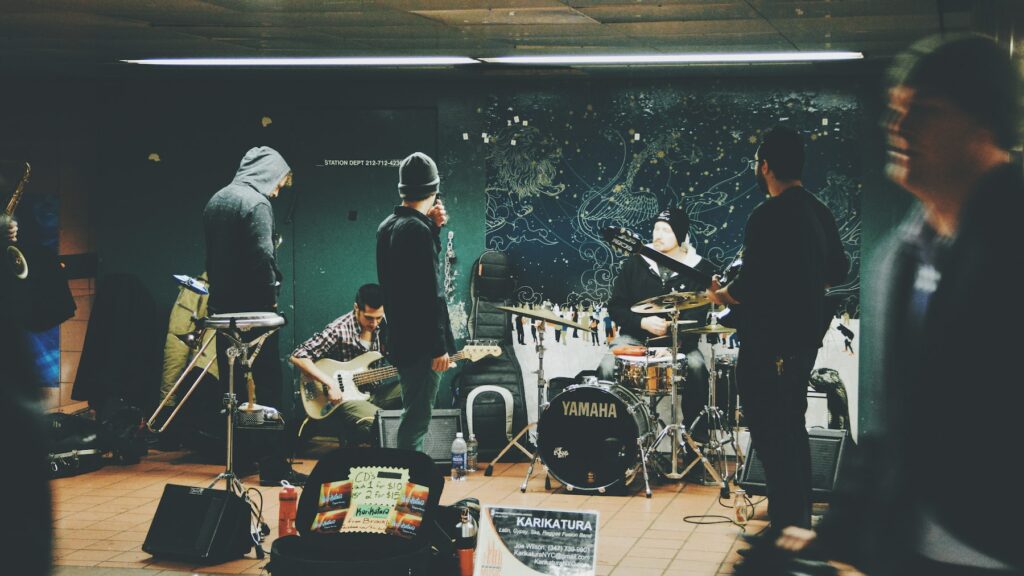![The ‘Giveaway Piggy Back Scam’ In Full Swing [2022]](https://www.cjco.com.au/wp-content/uploads/pexels-nataliya-vaitkevich-7172791-1-scaled-2-683x1024.jpg)

Revolutionizing Melodies: Google and Osaka University’s Innovative Leap in Generating Music from Brain Activity

As Seen On
In an exhilarating development, Google and Osaka University have embarked on an extraordinary research venture exploring music generation from brain activity. This pioneering collaboration combines the fascinating intricacies of the human brain with cutting-edge technology’s genius.
Functional Magnetic Resonance Imaging – the Unseen Navigator
The cornerstone of this venture is functional magnetic resonance imaging (fMRI). Utilized to explore the multifarious labyrinth of the human brain, fMRI detects minute changes in blood flow to identify areas of activity. As it turns out, these neuronic orchestration patterns can be translated into music processing – a key innovation that has set the stage for this revolutionary project.
Deep Neural Networks and Software: Stirring Techno-Musical Potions
Having decoded this musical lexicon of neuronal activity, Google and Osaka University employed deep neural networks – highly advanced machine learning algorithms that emulate the human brain’s working. These networks serve to convert the detected brain activity into an intricate weave of melodies. Starring in this process are Google’s ‘JukeBox’, an intricate algorithm trained to create music, and the ‘neural audio codec’, a software capable of translating the music representations into high fidelity, listenable audio tracks.
Structuring Sonic Masterpieces
Critical to this process is the representation and embedding of the music. This involves converting the complex analog musical structures into digital data forms. This digital representation allows the system to understand the semantic structure of music and to process and generate musical content. The music is then embedded using the ‘MusicLM’ model, a predictive model that allows for understanding and generation of music based on previously heard sounds.
Two exceptional types of audio-derived embeddings are introduced to create a richer, more nuanced music scape: the ‘MuLan’ and the ‘w2v-BERT-avg’. These auditory alchemists meticulously work on the layers of digitally represented music, refining and shaping them to create an enriched, high-definition sonic experience.
The Cul-de-Sacs of the Innovation Highway
While this process’s remarkable potential is clear, a few limitations present themselves. Chief among these is the dependence on linear regression from fMRI data, which, while effective to a large extent, leaves room for improvement in the precise translation of brain activity into music. Although, with constant technological advancements, it is hoped that these constraints will be mitigated in the near future.
The Future Harmonics: A Promising Crescendo
Regardless of the challenges, the promise of the future of music generation is immensely thrilling. Imagine individualized music straight from persons’ imaginations or songs that diverge between subjects with different musical expertise. It is mind-reading technology like never before.
As we hurtle towards this future, it raises questions about how society may utilize this technology. Could this signify the birth of a new genre, a new form of experiencing music? Will we have the option to ‘stream’ our thoughts into personalized soundtracks? And how will this technology evolve in tandem with the neuroscience of music perception?
In Conclusion: A New Symphony
In both theory and practice, the work done by Google and Osaka University is a symphony of technology, music, and neuroscience. Exciting and groundbreaking, this development heralds new possibilities for the interconnectedness of these fields and the scope of human ingenuity itself.
We invite you, the tech enthusiast, the music lover, the neuroscience devotee, to follow this fascinating journey. Let’s tune in to the future, witnessing the harmonious unfolding of technology and human creativity. What does the future hold for mind-reading musical technology? Only time will play this melody.
Casey Jones
Up until working with Casey, we had only had poor to mediocre experiences outsourcing work to agencies. Casey & the team at CJ&CO are the exception to the rule.
Communication was beyond great, his understanding of our vision was phenomenal, and instead of needing babysitting like the other agencies we worked with, he was not only completely dependable but also gave us sound suggestions on how to get better results, at the risk of us not needing him for the initial job we requested (absolute gem).
This has truly been the first time we worked with someone outside of our business that quickly grasped our vision, and that I could completely forget about and would still deliver above expectations.
I honestly can't wait to work in many more projects together!
Disclaimer
*The information this blog provides is for general informational purposes only and is not intended as financial or professional advice. The information may not reflect current developments and may be changed or updated without notice. Any opinions expressed on this blog are the author’s own and do not necessarily reflect the views of the author’s employer or any other organization. You should not act or rely on any information contained in this blog without first seeking the advice of a professional. No representation or warranty, express or implied, is made as to the accuracy or completeness of the information contained in this blog. The author and affiliated parties assume no liability for any errors or omissions.

